Key takeaways:
- Assessments should accommodate diverse learning needs, particularly for students with dyslexia, by using alternative formats like oral assessments and flexible timing.
- Involving learners in the assessment process fosters ownership, enhances engagement, and allows students to showcase their strengths in ways that traditional tests may not capture.
- Utilizing technology, such as interactive platforms and adaptive learning tools, can significantly personalize assessments and cater to various learning styles.
- Reflecting on assessment outcomes collaboratively with students promotes meaningful discussions about their learning journey, highlighting strengths and encouraging goal-setting.
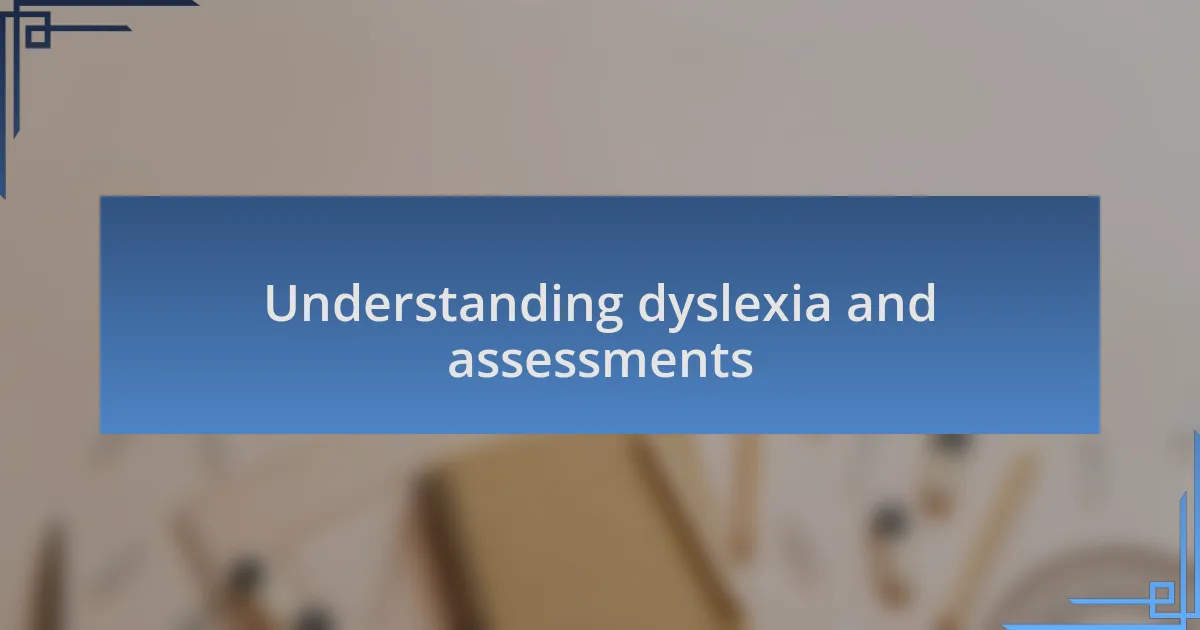
Understanding dyslexia and assessments
Understanding dyslexia is crucial when it comes to assessments. I remember a student of mine who faced immense anxiety during tests, not because she wasn’t capable, but because traditional assessments didn’t accommodate her learning needs. This made me wonder: how can we create an environment where assessments truly reflect what learners know rather than how they struggle with reading?
When designing assessments for learners with dyslexia, it’s essential to consider alternative formats. For instance, I once implemented oral assessments for a student who excelled verbally yet struggled with written tasks. This not only eased her stress but also highlighted her knowledge in a way that a standard test could not. Isn’t it fascinating how a small shift in approach can unlock a learner’s potential?
Furthermore, it’s important to involve learners in the assessment process. I recall inviting my students to share their preferred methods of demonstrating understanding. Their input not only empowered them but also enriched the assessments we developed together. Could you imagine the difference it makes when learners feel their voices are heard in their evaluation journey?
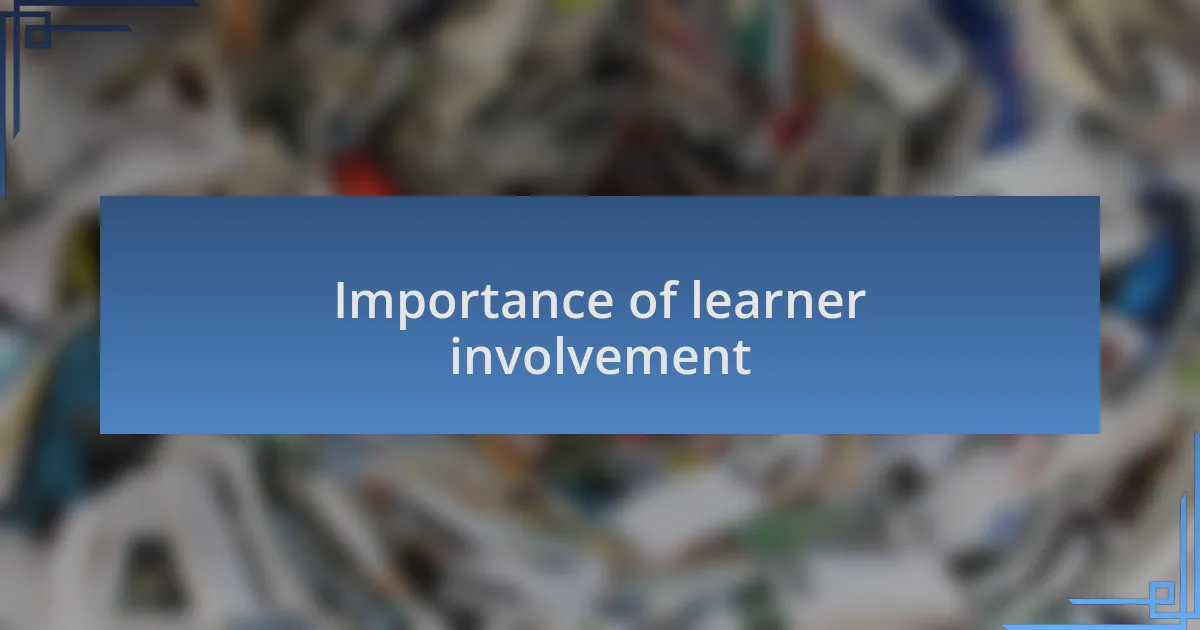
Importance of learner involvement
Involving learners in assessments is vital because it cultivates a sense of ownership over their learning journey. I remember a situation where I asked my students to craft their own assessment questions. Their enthusiasm was infectious, and it became evident that they engaged with the material more deeply when they felt they had a say in how they were evaluated. Isn’t it refreshing to think that students can take control of their learning in such a meaningful way?
When learners actively participate in assessments, they often uncover their strengths and areas for growth. One of my students once expressed feeling more confident when he chose to present his knowledge through a project rather than a traditional test. Watching his pride as he showcased his work made me realize that assessment isn’t just about measuring knowledge; it’s also about celebrating progress. How often do we overlook these moments of triumph in a sea of standardized testing?
Moreover, learner involvement can bridge the gap between educators and students. I vividly recall a workshop where learners voiced what worked and what didn’t during assessments, leading to pivotal changes in my approach. Their feedback made me more attuned to their needs, transforming assessments into collaborative experiences. Isn’t it incredible how fostering that dialogue can enhance our understanding of each learner’s unique style?
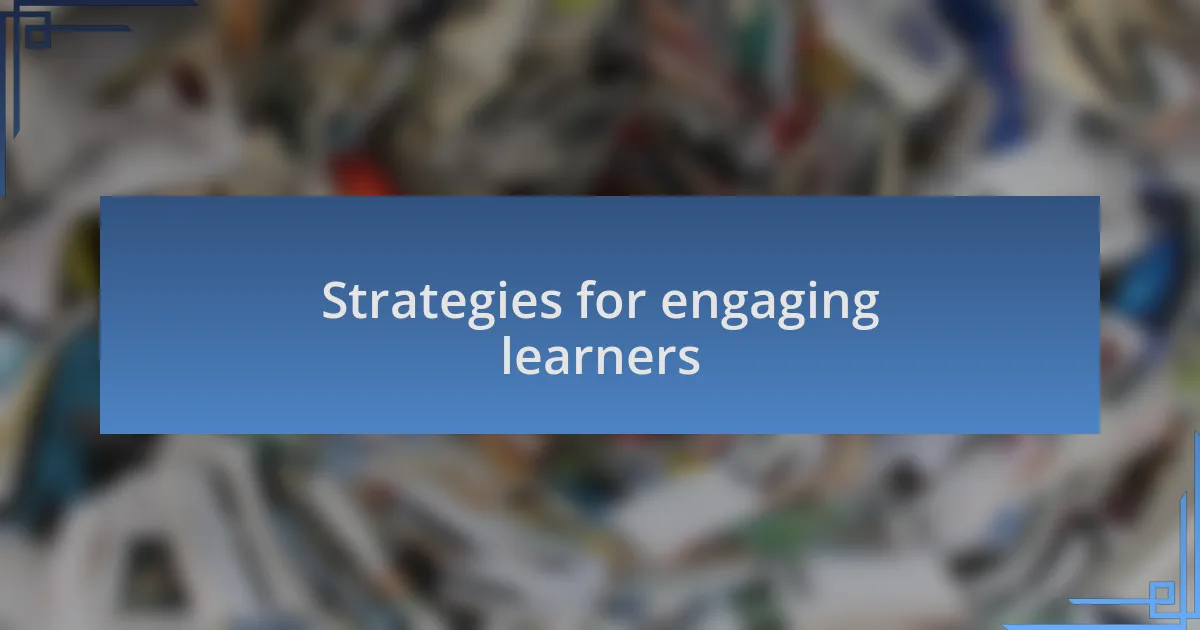
Strategies for engaging learners
Creating assessments that cater to the interests of learners can significantly boost their engagement. For instance, in one of my classes, I allowed students to choose topics for their project-based assessments. The excitement in the room was palpable; they invested not just their time but their creativity. It felt like a lightbulb moment when I realized that connecting assessments to their passions could foster deeper understanding and motivation.
Another effective strategy I’ve found is incorporating peer assessment. Once, during a group project, I had students review each other’s work. The discussions that followed were eye-opening. They not only learned from one another but also developed critical evaluation skills. Watching them articulate their feedback was like witnessing a transformation; they took ownership of their learning through collaboration. How often do we underestimate the power of peer relationships in the learning process?
Additionally, utilizing technology can enhance learner engagement in assessments. I once integrated an online platform where students could showcase their work and receive comments from their peers. The thrill of seeing their work appreciated publicly brought a new level of enthusiasm to their studies. Isn’t it wonderful how technology can create a community of learners who are excited to support one another?
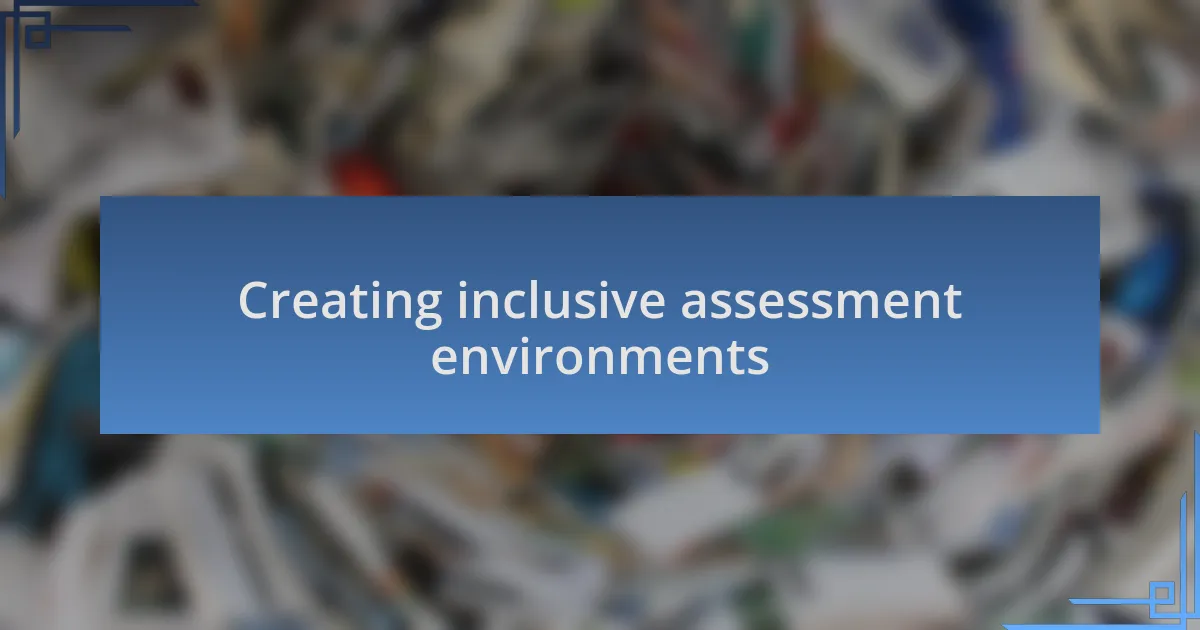
Creating inclusive assessment environments
Creating inclusive assessment environments is crucial for all learners, especially those with dyslexia. I remember a time when I transformed a standard testing situation into a more relaxed setting by allowing students to use colored overlays and special fonts on their assessments. The moment I noticed their anxiety drop was profound for me; a simple adjustment made a world of difference in their confidence and performance. Have you ever seen how little changes can create a ripple effect of positivity in a classroom?
In another instance, I implemented a flexible timing approach for assessments. I vividly recall a student who struggled to keep up under strict time limits. When I allowed them to work at their own pace, I watched not just their grades improve but their whole demeanor shift. It was as if a weight had been lifted. Doesn’t it make you think about how important it is to tailor our assessments to the individual needs of our learners?
Finally, encouraging students to collaborate during assessments fosters inclusivity. I once had a group completing a project where they could choose to work together or individually. The collaborative energy was infectious, and those who often felt isolated thrived within the group dynamic. It reminded me that assessment isn’t just about measuring knowledge; it’s about creating a supportive environment where every learner can shine. How could we not prioritize such vital connections?
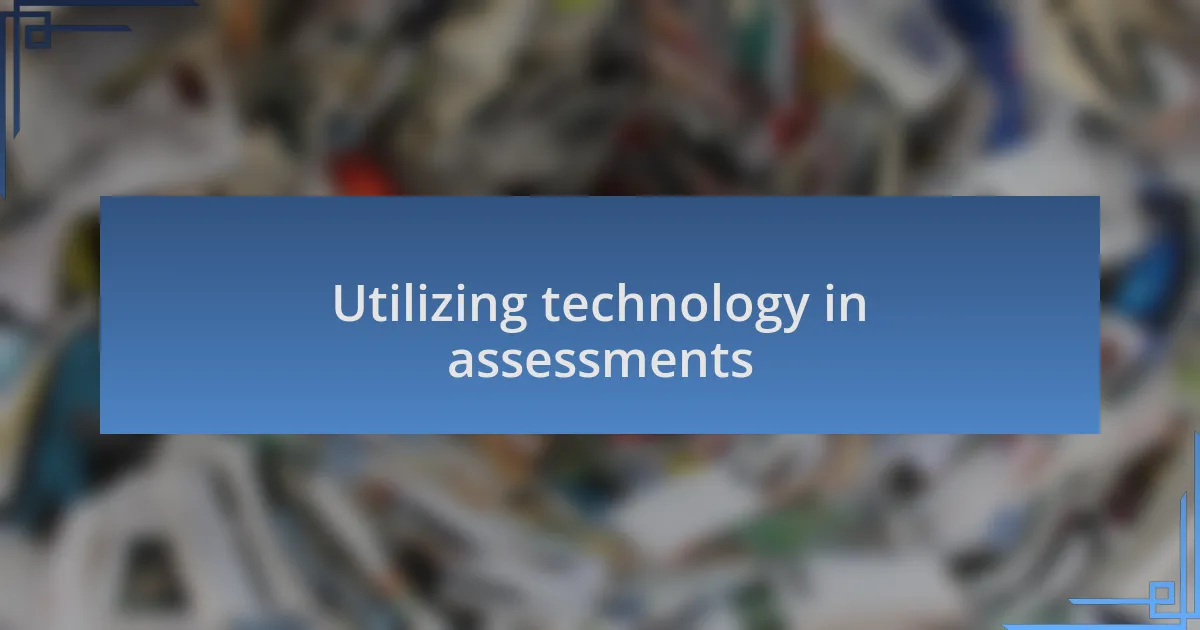
Utilizing technology in assessments
Incorporating technology into assessments can profoundly impact how we accommodate learners with dyslexia. For instance, I once introduced a speech-to-text software during a writing assessment. The moment I saw a student who usually struggled to express their thoughts freely start typing with ease was unforgettable. It was as if a door had opened, revealing their true potential. Have you ever witnessed the shift in a learner’s confidence when given the right tools?
Additionally, using interactive platforms allows for varied assessment formats that cater to diverse learning styles. I recall a time when I utilized an online quiz tool that integrated visual, auditory, and kinesthetic elements. Students who typically felt daunted by traditional exams responded with enthusiasm, showcasing their understanding through a format they found engaging. It prompted me to think about how vital it is to harness these resources effectively. How could we miss out on the opportunities that technology presents to enhance learning experiences?
Moreover, adaptive learning technologies can personalize assessments, catering to each student’s unique needs and pace. I once implemented an adaptive testing system that adjusted the difficulty based on student responses. Watching students engage and persist in challenges tailored to their current levels was incredibly rewarding. It highlighted the importance of embracing technology that not only assesses but also empowers our learners. Isn’t it fascinating how the right tools can transform the assessment landscape?

Personalizing assessments for individual needs
Personalizing assessments for individual needs requires a deep understanding of each learner’s unique strengths and challenges. I remember a student named Alex, who struggled with written assignments but thrived in verbal presentations. By allowing him to present his knowledge through oral assessments instead of traditional writing tasks, I witnessed a remarkable change. His confidence soared, and he was able to communicate his ideas far more effectively than before. Isn’t it astonishing how a small adjustment can unlock a student’s potential?
Another key aspect is customizing the assessment format itself. I once collaborated with a dyslexic learner named Maya to create an assessment that included visual elements, like graphic organizers and illustrations. This approach not only made the tasks more engaging but also allowed her to express her understanding in a way that felt natural to her. Have you considered how small tweaks in assessment design could reveal deeper insights into a learner’s comprehension?
Lastly, providing multiple avenues for feedback is crucial in personalizing assessments. I’ve had great success with instructional feedback sessions, where students reflect on their performance and discuss what strategies worked or didn’t work for them. This collaborative dialogue not only helps them feel heard but also inspires them to take ownership of their learning journey. How often do we create spaces for such productive discussions in our assessments?

Reflecting on assessment outcomes together
Reflecting on assessment outcomes is more than just evaluating scores; it’s an opportunity for meaningful conversations. I recall sitting down with a student named Liam after a math assessment. Instead of merely discussing his incorrect answers, we explored his thought process behind each response. This experience revealed not just what he missed, but also how he approaches problem-solving. Isn’t it fascinating how understanding a learner’s mindset can reshape the way we view their progress?
In another instance, I engaged with Ella, who often felt disheartened after receiving her assessment results. We decided to analyze her strengths by looking at sections where she excelled. The look of surprise on her face when recognizing her improvements sparked a joyful realization that she had made significant strides. It made me wonder, how often do we focus solely on what’s wrong instead of celebrating what’s going right?
Moreover, sharing reflections with learners fosters a collaborative atmosphere that’s truly rewarding. I often ask my students to set new goals based on our discussions, turning assessments into a shared journey. This approach not only empowers them but also deepens my own understanding of their learning pathways. In what ways can we build such partnerships with our learners to enrich their experience?